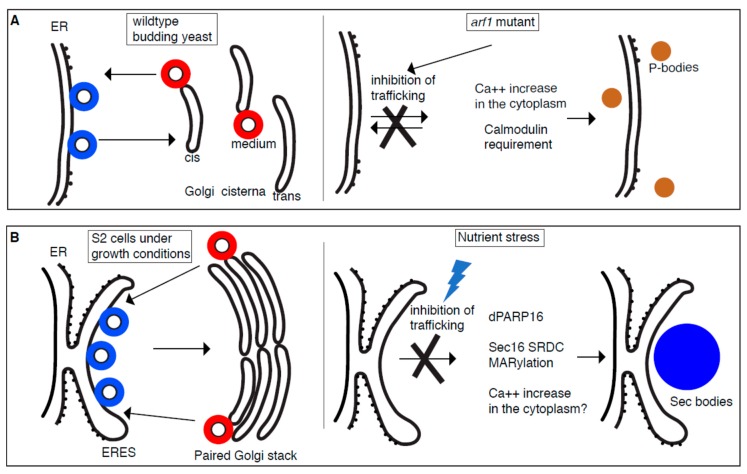Figure 1.
Stress assemblies and the inhibition of trafficking in the early secretory pathway. In growing conditions, COPII (Coatomer complex II) coated vesicles (blue) bud from ER (budding yeast) and ER Exit Sites (ERES) (Drosophila S2 cells) whereas COPI (Coatomer complex I) coated vesicles (red) bud from the Golgi. (A): In yeast, a subset of secretory transport mutants causes inhibition of trafficking in the early secretory pathway and leads to the formation of multiple P-bodies. These mutants are more sensitive to salt leading to an increase of calcium in the cytoplasm and triggering the formation of specific P-bodies containing Pat1 and Scd6 in a calmodulin dependent manner. (B): In Drosophila S2 cells, the nutrient stress of amino acid starvation also inhibits protein transport in the early secretory pathway and leads to the formation of Sec bodies. Amino-acid starvation appears to lead to dPARP16 activation that MARylates the Sec16 SRDC (Serum Responsive Domain Conserved) leading to Sec body formation. Whether Ca++ imbalance is also important remains to be established.

